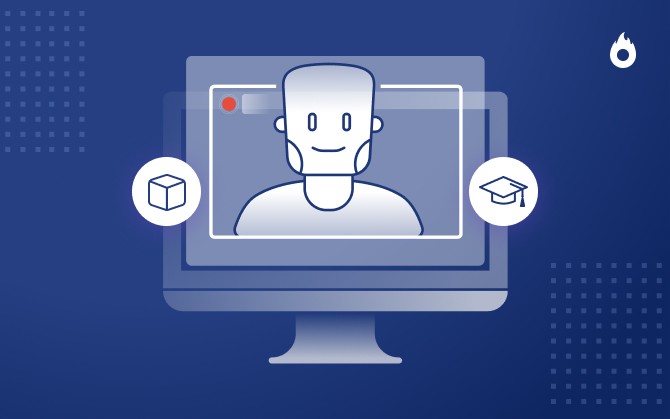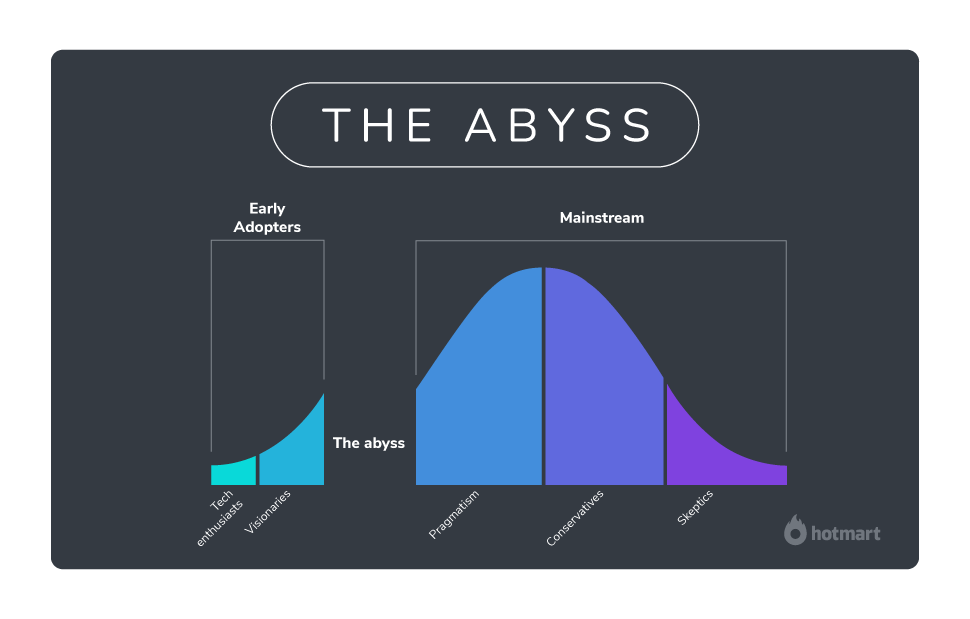
What’s the Future of Education? Hotmart’s CEO Shares His Insights
What’s the future of education? How do we overcome the obstacles of traditional teaching? Get insights from JP Resende, Hotmart’s CEO.

What will we see in this post
How is the education sector being impacted by new technologies? What innovations and trends can we expect for this market in the coming years? What’s the future of education?
The answer — according to João Pedro Resende, CEO and cofounder of Hotmart — is in online, decentralized and horizontal learning!
With more than 10 years’ experience in developing technology for education, JP talked to the audience that attended the last edition of Hotmart MASTERS.
And you can check out JP Resende’s presentation on the future of education in the video below. The Brazilian CEO shares his views in Portuguese with English subtitles. Or, if you prefer, you can keep reading this post!
VIDEO: The future of online education | João Pedro Resende at Hotmart MASTERS

Online education: bridging the gap of technology adoption
JP Resende began his talk by explaining a concept well known among those who work with technology: the innovation adoption curve.
According to it, whenever a new technology is developed, it first needs to be approved by early adopters, who are the people open to experimenting with new things, and by enthusiasts.
However, for this new technology to reach the general public and become adopted en masse, it needs to go through a process of maturity, also known as “the abyss”.

The problem, as JP Resende points out, is that the vast majority of new technologies end up not bridging this abyss and fail to reach the general public. As a result, these ideals fall into oblivion, since they weren’t able to reach the mainstream.
However, Hotmart’s CEO points out that one educational innovation trend was able to bridge the abyss and break the barrier that separated it from the general public: online courses.
This technology is allowing people anywhere in the world to teach and learn a new skill or profession without leaving home.
JP explains that distance education systems make it possible to overcome many of the limitations of the traditional education model, such as high cost, long training time, geographical limitations, and faster obsolescence.
Online learning, besides helping in revolutionizing the future of education, also accelerates social transformations, helping in personal development and in the professional relocation of the students.
The 5 limitations of traditional education
But what are the limitations of the traditional education model, focused on in-person and analogical teaching? Hotmart’s CEO points out 5 obstacles to this method that are likely to change in the future of education.
1. Cost and training time
Traditional, in-person education, such as schools and universities, is expensive and inefficient.
Students invest a large sum of money at the beginning of their studies and take, depending on the type of course, an average of four years to graduate.
At the same time, teachers and educational institutions need to invest heavily in classroom infrastructure, such as the lease of space, desks, chairs, etc.
As a result, the ability to scale up teaching and take advantage of the opportunity to improve and qualify people even further is hindered.
Online learning, on the other hand, eliminates a large part of these costs and also allows students to accelerate their learning journey.
2. Same method, sequence and pace for everyone
JP Resende compares traditional teaching to a factory’s production line, since all students are required to learn the same content through a common methodology and at the same pace.
This, according to Hotmart’s CEO, disrespects student individuality, preventing them from developing their skills to the fullest.
Online education, on the other hand, not only respects each student’s pace, but also adapts to their needs.
3. Professionals without opportunities in the market
And after all the effort and dedication to complete the undergraduate course, students face a new challenge: the lack of opportunities in the market.
According to JP, traditional teaching is still out of touch with the demands of the job market. As a result, students find themselves without opportunities in the job market and the qualification of professionals becomes the responsibility of the companies.
4. Geographic and physical limitations
The traditional teaching model is based on the presence, at the same place and time, of teachers and students, so that the classes can take place.
This requirement creates a series of problems related to commuting, especially in large urban centers where traffic jams are common.
In addition, a less flexible study routine negatively affects students and teachers, who lose productivity, concentration, and motivation.
Online learning breaks through these limitations, since it offers students the possibility of attending classes at more flexible times, which fit better into their routines.
5. Increasingly faster obsolescence
Finally, JP Resende points out that, because of digital and technological transformations, professionals are becoming obsolete increasingly faster. And the traditional teaching model isn’t able to keep up with these changes.
The result is that when students graduate, their knowledge is already obsolete, without the skills that the market demands, and more likely to remain unemployed.
Online and decentralized education: the future of education
The solution to overcoming all of these obstacles, and helping people develop personally and professionally, is online education.
But JP Resende points out that this doesn’t mean abandoning the traditional model of education, or disregarding its positive aspects.
According to Hotmart’s CEO, the future of education lies in a model capable of combining what’s good about in-person teaching and online teaching.
To this end, he lists a few characteristics of education in the 21st century:
- Decentralized: Online education needs to be more decentralized and asynchronous, giving the opportunity for each student to learn at their own pace and without geographical limitations.
- In community: The education of the future will be based on the construction of communities, where students and teachers help each other, and build knowledge together, in a collaborative manner.
- From the bottom up: Online teaching technologies allow more people to teach and share knowledge, and give teachers access to quality tools and didactics.
Learn about the education trends of the future
The future of education shows a lot of promise, and online courses are just one of the technologies that are revolutionizing this industry.
Have you ever considered joining this booming market? Hotmart can help you. Check out our Complete Guide to Creating Online Video Courses.




